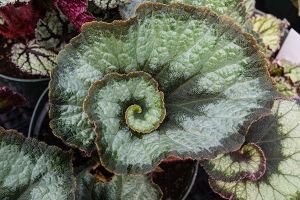If you are anything like me, you may have a tendency to collect living beings that require routine care and attention, and the occasional house sitter. Once I realized there were enough cats and dog running around, I turned my attention towards houseplants, which are now in the realm of forty. While the cats and dog have their own issues that I may or may not have a handle on, the houseplant situation is one my horticulturally inclined self can contend with. Taking the time to research which plants could potentially harm my pets and locating them out of the path of destruction has been well worth the effort. Now when my cat throws up all over the house, I can eliminate plants as a potential cause. An ounce of prevention is worth…. a costly visit to the veterinarian.

Many of our common houseplants can have adverse effects on pets, with symptoms ranging from mild to severe. The ASPCA has a comprehensive website which lists names of houseplants and landscape plants, along with the level of toxicity for cats, dogs, and horses: https://www.aspca.org/pet-care/animal-poison-control/toxic-and-non-toxic-plants. This article explores the toxicity of many common houseplants.
With their ability to thrive in low-light conditions and the various attractive forms in which they are available, Philodendrons make lovely houseplants; however, all parts are poisonous. They contain insoluble calcium oxalate crystals which can cause severe reactions if ingested, including intense burning and irritation of mouth, tongue and lips; drooling; vomiting; difficult and painful swallowing; and loss of speech. Golden Pothos or Devil’s Ivy (Epipremnum aureum) is another plant species containing insoluble calcium oxalate crystals that cause the same symptoms. Fortunately, many of these plants are well-suited for hanging baskets and can easily be kept of our reach of pets.
Shamrock Plant (Oxalis spp.) contains soluble calcium oxalates which can result in kidney failure, tremors, and salivation in cats and dogs. These plants grow in a variety of colors and is a fun species to collect, just be sure to place on higher shelves that are out of reach. Begonia’s are another tempting collectors’ plant, growing in a variety of patterns, colors, and textures; however, they share the same toxic element as the Shamrock plants. The fleshy root system contains the most toxic parts, so keep away from diggers.
The Peace Lily (Spathiphyllum spp.) is a popular houseplant due to its ability to thrive in low light conditions; however, like the philodendron, it contains insoluble calcium oxalates. Peace lilies can grow rather large and are not well-suited for hanging baskets. It’s best to keep them in rooms where the critters don’t go, or perhaps take this one to your office where you can enjoy it without the munching concerns.

Jade plants (Crassula argentea) are succulents that are popular due to their ability to thrive with little water; however, ingestion can cause vomiting, depression, and incoordination in cats and dogs. Another popular albeit poisonous succulent is Kalanchoe, which can cause vomiting, diarrhea, and abnormal heart rate (this last symptom is rare) due to the toxic element bufodienolides.
Desert Rose (Adenium obesum) has a unique growth pattern with its bulbous base and canopy-like branches, resembling a miniature tree with gorgeous trumpet-like flowers, making it an appealing houseplant for Floridians. Enjoy the beauty of your Desert Rose placed well out of reach of your furry critters, as it contains Cardiac glycosides which can cause vomiting, depression, diarrhea, anorexia, irregular heat beat, and even death.
Other common houseplants that contain toxic elements to pets include snake plant (Sansevieria trifasciata), dumb cane (Diffenbachia amoena), Straight-margined Dracaena (Dracaena marginata), Arrow-head Vine (Syngonium podophyllum), Elephant Ears (Alocasia spp.) and Flamingo Plant (Anthurium scherzeranum).
If separation of flora and fauna is not an option in your house, there are plenty of non-poisonous plants that can co-exist peacefully with your furry critters. The following are considered non-poisonous: Peperomia (Peperomia spp.), Climbing Begonia (Cissus dicolor), Ponytail Palm (Beaucarnea recurvata), Goldfish Plant (Hypocyrta nummularia), Hindu Rope Vine (Hoya carnosa), Silver Pink Vine (Hoya publcalyx), Lipstick Plant (Aeschynanthus humilis), Polka Dot Plant (Acantha), Earth Star (Cryptanthus bivattus minor), Prayer Plant (Calathea insignis), Purple Passion Vine (Gynura aurantica), and Swedish Ivy (Plectranthus australis).
References and Photo credit: https://www.aspca.org/pet-care/animal-poison-control/toxic-and-non-toxic-plants

 0
0
